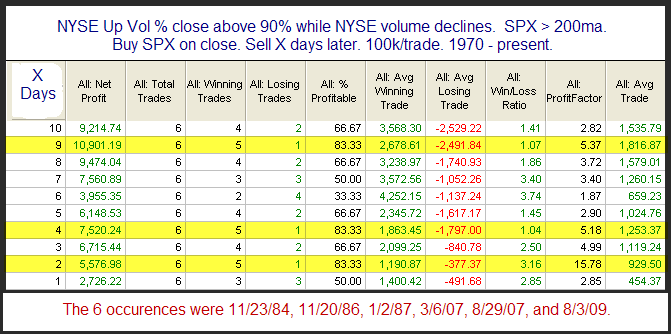Two useful breadth statistics that are tracked by Worden Bros. are the % of Stocks Trading Above the 200ma (T2107) and the % of Stocks Trading Above the 40ma (T2108). At the current time the difference between these two readings is very large. 72% of stocks remain above their 200ma, but only 24% stocks are above their 40ma. The only other time since 1986 when Worden Bros. began tracking these statistics that the difference has been this large was late October / early November of 2009. To get such a large difference between the readings you would need to have a strong pullback occur in a strong uptrend. I was curious to see whether such a strong pullback was likely to derail the long-term uptrend and lead to further selling. To get a better sense I lowered the required difference between the two to 40. Below are those results.

In general, returns were positive from day 1. From a long-term perspective, such sharp pullbacks have been followed by additional buying. Any uptrend strong enough that such a large number of stocks were trading above their 200ma that the difference could be as large as 40 simply didn’t fall apart when a strong selloff occurred. The 2004 instance saw a retest of the highs before the market underwent a lengthy but shallow selloff. The other instances all rallied through their old highs and kept rising. Instances are definitely low but results couldn’t be any more bullish.
While we are now way above a difference of 35, I also ran that to get a few more instances.

This seems to confirm the previous findings and suggests the current breadth differential is indicative of not a market about to fall apart, but rather a market that is likely to resume its uptrend – or at least test its recent highs.















